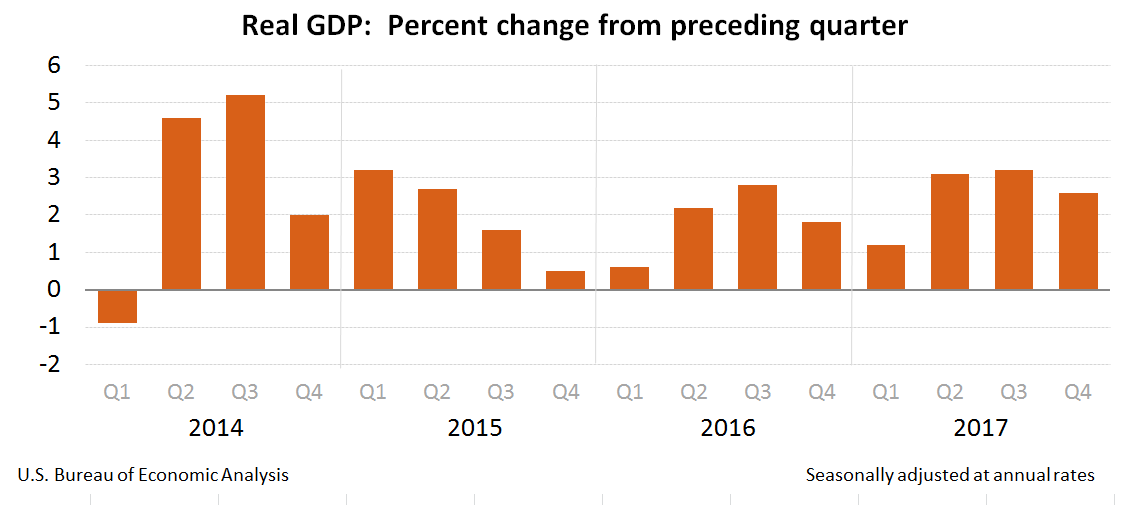The Bureau of Economic Analysis today released its latest National Income and Product Accounts report, which revealed that real gross domestic product (GPD) grew by 2.6 percent year-over-year in the fourth quarter of 2017, a slight slowdown from Q3’s 3.2 percent year-over-year growth. The current-dollar GDP increased 5.0 percent to $19,738.9 billion.
Overall, real GDP increased 2.3 percent in 2017 — 0.8 percentage points higher than 2016’s growth (1.5 percent), and the current-dollar GDP increased by 4.1 percent to $19,386.8 billion.
The Bureau says Q4’s year-over-year growth is due to personal consumption expenditures (PCE), nonresidential and residential fixed investments, state and local government spending and federal government spending, which was “partly offset by a negative contribution from private inventory investment.”

National Association of Realtors chief economist Lawrence Yun calls 2017’s GDP “respectable” and says the lack of new residential construction is why the economy failed to reach 3 percent growth.
“The housing market performed reasonably well last year with decade highs in new and existing home sales. But housing construction still did not fully get back to historically normal levels,” Yun said in an emailed statement.
“Only 1.2 million housing units were constructed compared to the historical average of 1.5 million starts a year. This underproduction is the principal cause of the ongoing housing shortage, and why the economy did not fully get back up to 3 percent GDP growth possibility last year.”
“Even in the private business sector, spending for equipment and software soared, but not for commercial building constructions,” he added.
But Yun is optimistic about 2018, saying tax reform should get the U.S. economy back to 3 percent growth, or even 4 percent if residential construction gets back up to historic norms.
“For 2018, the tax cuts that go into effect will provide a lift, and GDP growth of 3 percent is likely. But to have even faster expansion, along with strengthening wage and income gains, real estate construction has to significantly ramp up and show robust gains,” said Yun.
“Liberating small-sized community banks from big-bank regulations will permit more construction loans, and could get us back to historical average conditions for construction. This would in turn lead to a spectacular gain of near 4 percent GDP growth in 2018.”
Other data from the U.S. Department of Commerce:
- Current-dollar personal income increased $178.9 billion in Q4.
- Disposable personal income increased 3.9 percent ($139.0 billion).
- Real disposable personal income increased 1.1 percent.
- Personal saving was $384.4 billion in Q4.
Read the full report here.
